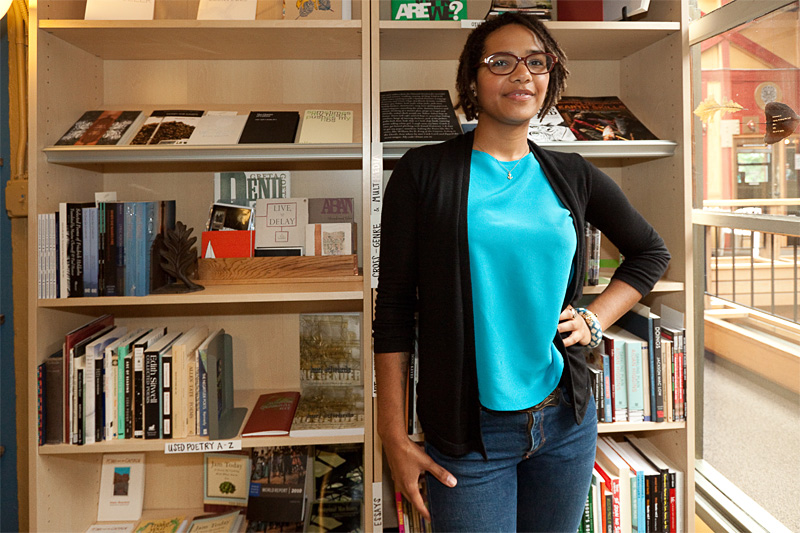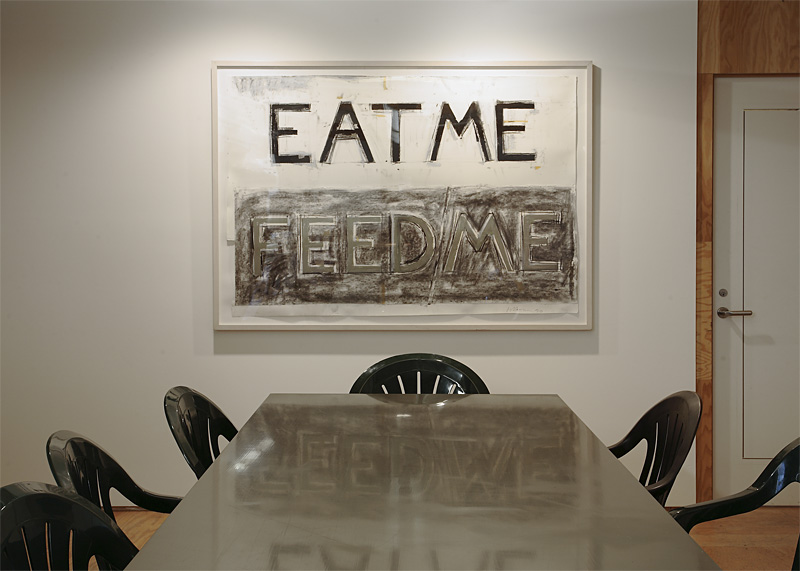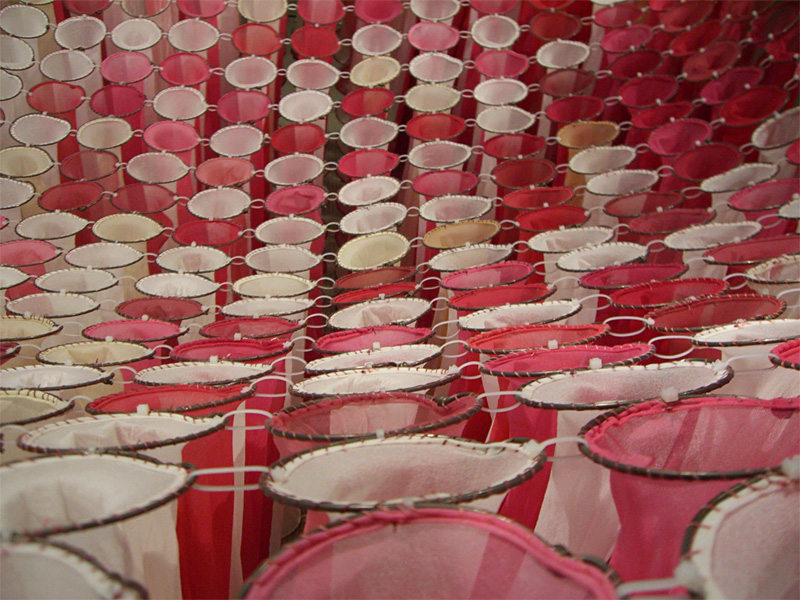credit:steelheaddiner.comTeresa and Kevin DavisPart two of our interview with Kevin Davis, chef/owner of Steelhead Diner and of soon-to-open Blueacre Seafood. You can read part one here. Check back tomorrow Davis’ recipe for Angry crab.Tell me about your plans for Blueacre Seafood.So the object was to make this place approachable, accessible, brighter, more user-friendly, so we’re going to take all the shutters and shades, blinds, out of the windows, all the visual obstructions that were here. So it’s cleaner, when you sit at the oyster bar, you’re going to be face to face with the oyster shucker.I what know Seattle needs, I don’t want to say too much, I don’t want to announce it to the world, but Seattle needs a seafood restaurant. Cause there’s not one.I would say I am an expert on this little corner of the earth, this little Google blip. I’ve had five years here to see what worked and what didn’t work. And two years after to see. I went to school on that. So what are you going to do here?First, a broad selection is important to people. You want to be able to appeal to a broad segment of the population. There are some restaurants, their raison d’etre is to appeal to a very small segment of the population, and that’s the foodies, the ones that just appreciate the finer nuances of the dining experience. And they are closed to everybody else. They have three or four items on their menu and they all end in pork and salt and anchovies. And that’s not what we’re going to do. We want to make a lotta people happy. Just like I always said at Steelhead. I want to do this the ancient-Chinese-secret way. You want to make a little money of off a lotta people.So while we’re going to have a broad selection of seafood, not from around the world, it’s gong to be from American waters. I am going to temper it with Steelhead Diner sensibilities. So you’re gonna have half-portions and whole portions. The portions aren’t gonna be as big. You know, a lot of times they were wasteful. They were designed to have an impact, but in a Seattle market, it’s wasteful. [Davis is talking about Oceanaire here.]You mean a visual impact by having a big portion?Yeah, it was designed to target the same type of personality that might go to a steakhouse but wanted to have a healthy experience, but still had that American red-meat-type mentality, and they wanted to appeal to them. If there are six steakhouses right out that door, and there are, you gotta figure there are enough of those people who would like to go to a steakhouse alternative, but also have bottles of Stag’s Leap, a nice martini, and still be able to get a big piece of meat and get full, but not necessarily be steak. And it worked, when I was here, it was very successful. It was as busy as 95, 99% of the restaurants in the city. And we had a great run. Steelhead is all wines from the Northwest, why don’t we just take it one step further and do wines from America. We can have California and the Finger Lakes, and you know, they produce wine in 42 states in America. Craft beer is from around America. Just think about it. It’s endless. And then, American seafood. When you say we are just going to use seafood from American waters, take the international water, and say our boundaries are 200 miles from shore. It doesn’t guarantee that every fish that comes out of that ocean is sustainably caught, but at least it will come from a monitored fishery, with sustainability in mind as a goal. That way I don’t have to deal with this guilt that I felt when I worked here (Oceanaire) before, of selling a piece of pelagic fish. If you get a swordfish from Ecuador, those fisheries are loosely managed, if at all, but most people don’t understand that the fish that are in Ecuador–or actually, fish that are in Florida, or off the coast of California, because they are pelagic fish–they circle the globe. Same thing with tuna.So one country can’t manage this fish because it’s a migratory fish?If one country is managing this fish, it doesn’t matter, because it’s still being taken. They’re still depleting the stocks, and it’s no secret that tuna, on a global level, the tuna stocks, the large fish, 90% of them are gone.This is why I think that I can do this and still be inside of my integrity. We’re going to augment the rare species with farm-raised, fresh-water species, which are raised in a sustainable environment. In fresh-water and contained, so the water is cleaner going out than coming in. Catfish, trout. They are excellent food sources. Because you can’t depend 100% on wild fish. You can’t say that anymore, I used to say that. I was very naive. But I know I am not going to use farm-raised salmonoids, because all the issues that surround that farming system. Farm-raised salmon is farmed in a saltwater estuary and there are a number of problems. One of the big problems is there is a high infestation of sea lice. Antibiotics, and escapement, farm-raised stock mingling with wild stock. That’s why I don’t believe in it. What’s your planned opening date?March 17. We’ll do a couple of soft openings, and we’ll do friends and family. And on the 19th we’ll open up live. It’s just me and my wife, we don’t have any investors. We don’t have deep pockets, so we’re not going to have a huge opening budget, so we have to practice on some guinea pigs. Mood-wise, it is going to feel a lot like Steelhead?We’re going to have an open kitchen, as you see. It definitely not going to be as stuffy as Oceanaire. Those windows [that] are shades will come out, you’ll be able to see in and out. And those booths will be switched over to this side …Oh, so you’re keeping some of the booths? Are they going to be leather?Yeah, marlin skin. Blue. Well, colored marlin skin. And shades of blue and green, and blue pendants dropped down here. The white tablecloths are gone. So it is not gong to feel as fancy. You won’t have servers in jackets. The whole idea is just to let people have fun and to not feel they have to take out a second mortgage to eat here.So are you going to be here on the line? I am. Anthony [Polizzi] is taking over [at Steelhead] and I am going to have a chef de cuisine because my wife is about to give birth to twins. Otherwise I would have said I want to do it myself.Somewhere along the line, it’s not about my ego anymore. Maybe when I was 30, a lot of it was about my ego. So I thought at the time it was about my art, and what I want to be. Whatever, whatever young men aspire to be. And now after doing what I’ve done, and kind of being fairly successful at what I do, I like to be able to see Anthony get credit, and step up and do his thing. And I have a chef de cuisine that I hired for Blueacre, now that I know my wife is going to need me. These are our first babies. I need to be there. Right off the bat, I wouldn’t be realistic if I said I was going to be here every day, on the line like I would when I opened this place, or when I opened Steelhead. I lived there. The chef de cuisine is very talented. His name is Brian O’Connor. You might have met him, he came up here to do Gabriel Claycamp’s Swinery. I think he’s going to be amazing. What would you like to see more of in Seattle from a culinary standpoint?My dream is that the Pike Place Market would be a working market, where all the farmers could come, and anybody that wanted to sell any local product that they had could just come and sell it. And it was possible and viable. Right now it’s very restrictive. You mean it would be an everyday farmers market, where all the produce is local and assumed organic, because it’s coming from small farms?Yep. And you would be meeting the farmers, and fishermen. Why isn’t it that way?Because it’s very expensive. The rent, to be in a stall there.The people that are there are the people that do it seven days week and make money at it. People that are doing it seven days a week can’t tend to their fields. So I know it couldn’t be possible, but if it was a place that restaurants could go and buy all their stuff, at good prices, and pick every thing they wanted. I don’t guess that’s a good thing to be saying. Because some people don’t know that.At least if it could be wholesale rather than retail. If I go there, I pay the same thing you pay, so I can’t go down there, really, and shop. I buy my stuff now from the same place they get it, so why would I go there and pay their markup?So what you’re saying: this was a market where you could go to source your restaurants, and pay wholesale to get locally grown goods. So would there be a double price point?No, it would be like that for everybody. It would be what you think of when you go to a market. You’re gonna go to the source. Not only are you going to get great product, you’re going to get great pricing, right?
More Stories From This Author
For 50 years, Zeke’s off US 2 has served delicious burgers
It’s been a popular pit stop in Gold Bar for skiers and hikers, and the same family still runs it.
With ‘Game of Thrones’ ending, it’s time for a proper feast
How to make a meal inspired by the Lannisters’ and Starks’ world, fit for the King in the North.
Stash Box: 2016-2019
Time to roll one for the road …







